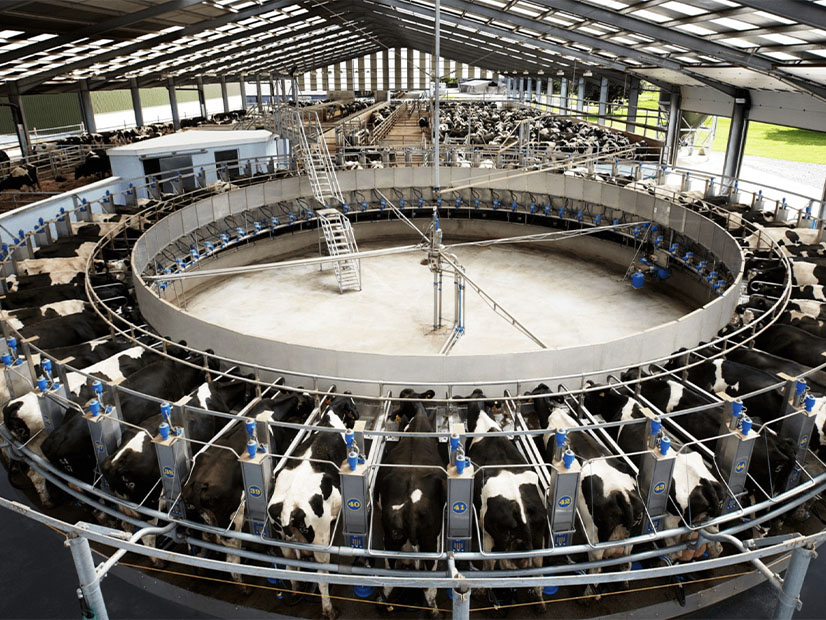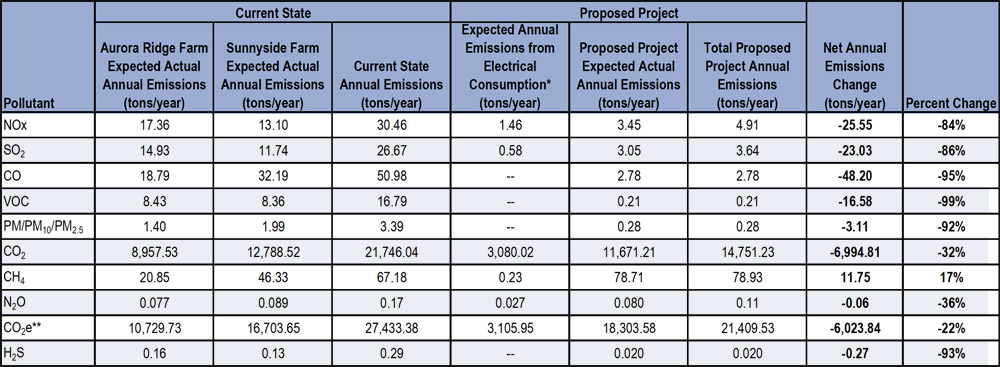
Bluebird Renewable Energy says its plan to transport renewable natural gas from existing anaerobic digesters in Western New York will reduce their on-site emissions, disputing claims to the contrary by environmentalists (21-G-0576).
In a late May exchange of arguments filed with the state Public Service Commission, a group of environmentalists continues to question the developer’s emissions analyses for a proposed facility that would take RNG produced from manure of nearly 7,000 dairy cows and truck it 70 miles to an interstate pipeline.
Bluebird Renewable Energy (BRE) is seeking approval of its project as furthering the state’s Climate Leadership and Community Protection Act (CLCPA) commitment to 100% zero-emission electricity by 2040 and a reduction of at least 85% below 1990-level greenhouse gas emissions by 2050. (See Western NY Dairy RNG Project Draws Opposition.)
A May 25 filing — by Irene Weiser, coordinator for Fossil Free Tompkins; Brian Eden of the Campaign for Renewable Energy; and Bob Wyman, a self-employed electrification advocate who is currently running for Congress — urged Administrative Law Judge James Costello to move the proceeding to a discovery period, followed by an opportunity to provide testimony. The signees said they believe that the emissions data provided by BRE reveal material issues of fact that interfere with attainment of the CLCPA greenhouse gas-reduction goals.
“In particular, we assert that BRE’s emission analysis does not account for all the emissions it should and that once a more complete emissions analysis is provided, it will demonstrate that the current system has lower emissions than the proposed RNG project,” they said.
 Emissions from the proposed equipment and the electricity required to replace the on-site generation (and emissions from truck transport of the RNG to the pipeline interconnection, which are very small comparatively) are summed and represent total annual Proposed Project emissions. | BRE
Emissions from the proposed equipment and the electricity required to replace the on-site generation (and emissions from truck transport of the RNG to the pipeline interconnection, which are very small comparatively) are summed and represent total annual Proposed Project emissions. | BRE
Specifically, they claim that BRE’s analysis has not accounted for emissions from the end use of the RNG; the transmission and distribution of the RNG following injection into the gas pipeline system; and the increased production of biogas.
In its May 27 response, BRE accused the intervenors of fishing for information in an untimely fashion and using the regulatory process to “request an opportunity for additional discovery at the 11th hour to, presumably, delay the proposed project from being approved.”
BRE said the information from its emissions analyses has been available since March and that the intervenors “could have, and indeed should have, executed the protective order, reviewed the emissions analyses and proffered additional information requests in a timely manner.”
Information relating to the emissions associated with transporting the RNG to the injection site were included in the emissions analyses, as were anticipated fugitive emissions, BRE said.
“The proposed project will not have any impact on the end use of gas, gas demand or the interstate pipeline itself. The RNG will be a one-for-one replacement of geologic natural gas in the interstate pipeline. As there will be no impact on the interstate pipeline, calculations relating to the emissions associated with the interstate pipeline are unnecessary. Moreover, the interstate pipeline is outside of the commission’s jurisdiction,” BRE said.
BRE also said it has not specifically calculated the potential emissions associated with compressing and decompressing the RNG for use in the interstate pipeline, and that nonetheless, such operations are outside the scope of the commission’s jurisdiction.
The developer asked Costello to determine that the letter filed by the intervenors fails to establish that issues of material fact exist; determine that no additional process is needed; and refer the petition to the PSC for approval.
In a May 31 response “correcting” BRE, Wyman said that he and the other environmentalists have consistently asserted that BRE’s statements that their proposed system will reduce emissions are incorrect or, at least, subject to significant doubt.
“The existing record, although incomplete, already establishes that BRE’s claim of emissions reductions is false. No additional information is required to support the development of testimony that establishes and explains the incorrectness of BRE’s claims,” Wyman said.
The request for additional discovery is motivated not by a desire to prove that an issue of fact exists, but rather to ensure that the issue and relevant facts are as well established in the record as possible, he said.
“The desire is not to discover information needed to make testimony possible, but rather to increase the quality and correctness of at least some of the testimony which will certainly be submitted, when the time for such testimony arrives,” Wyman said.


